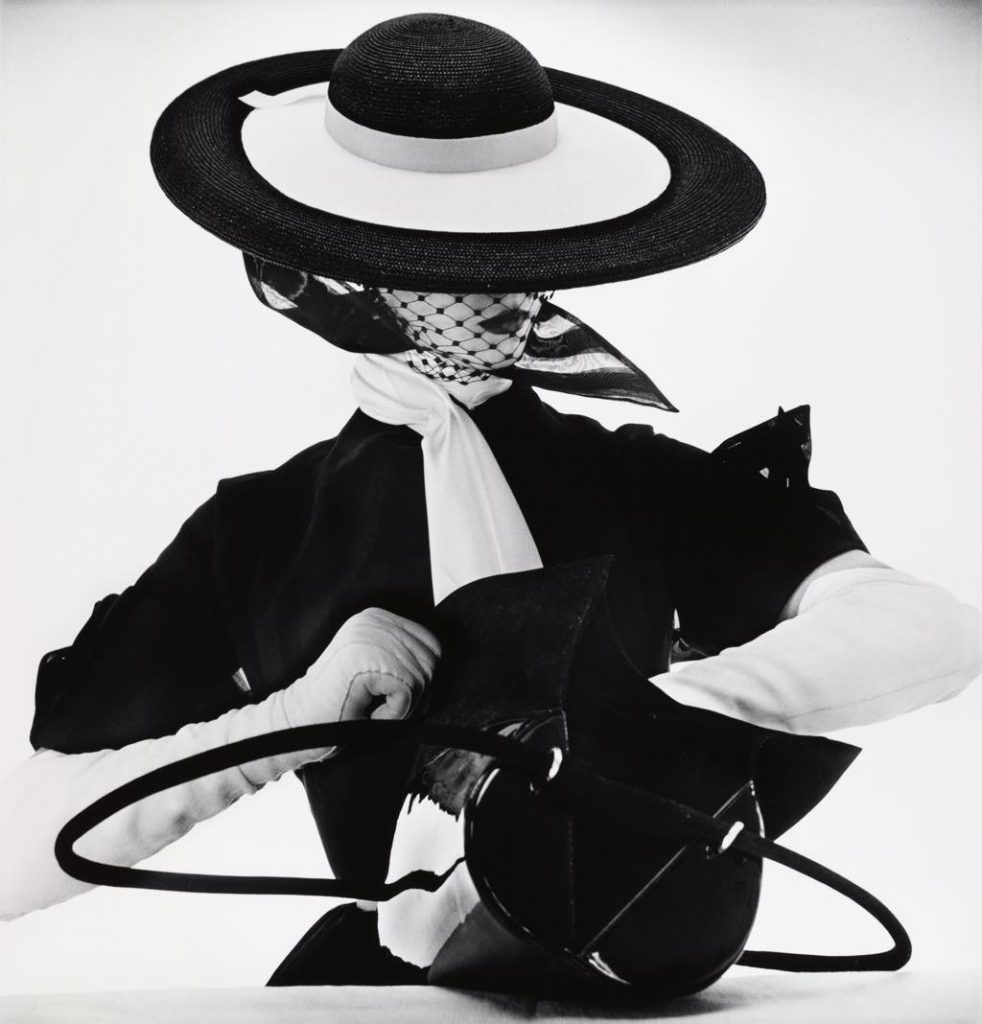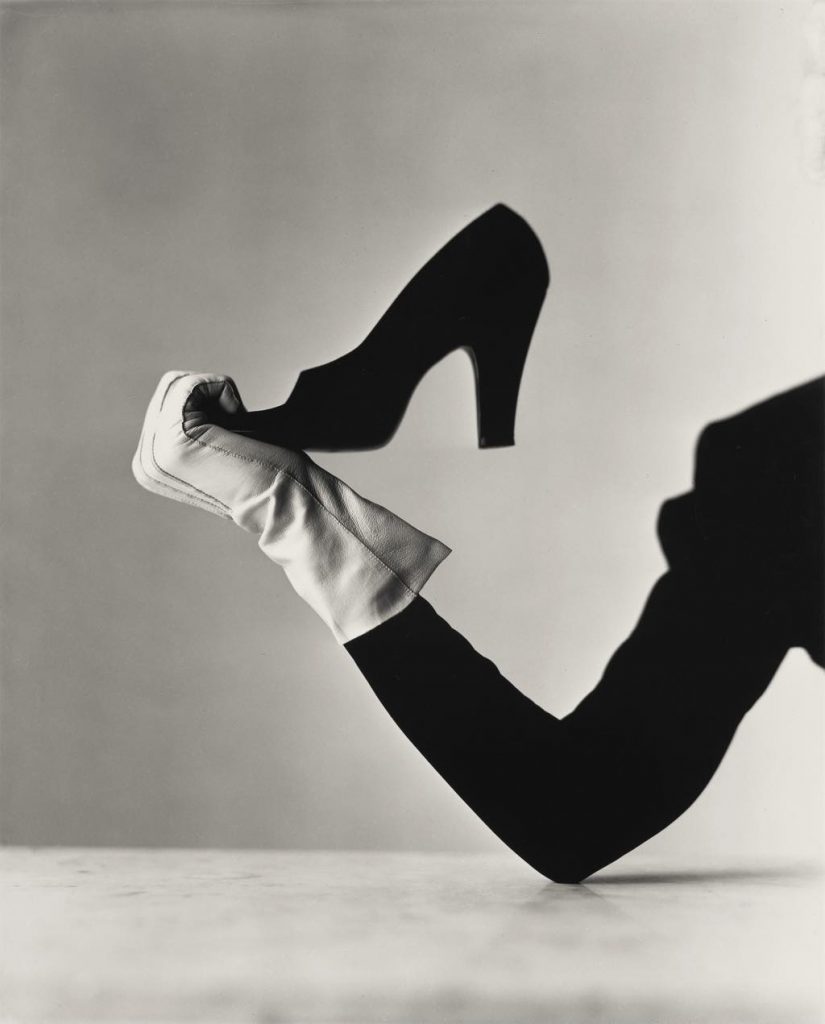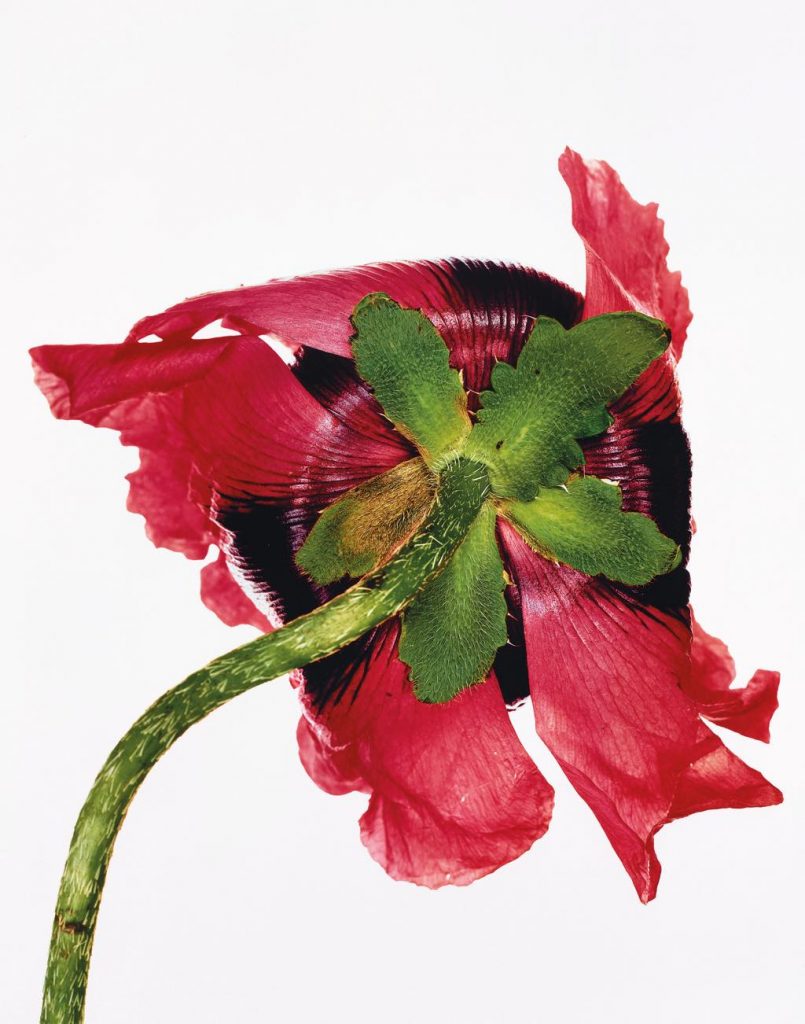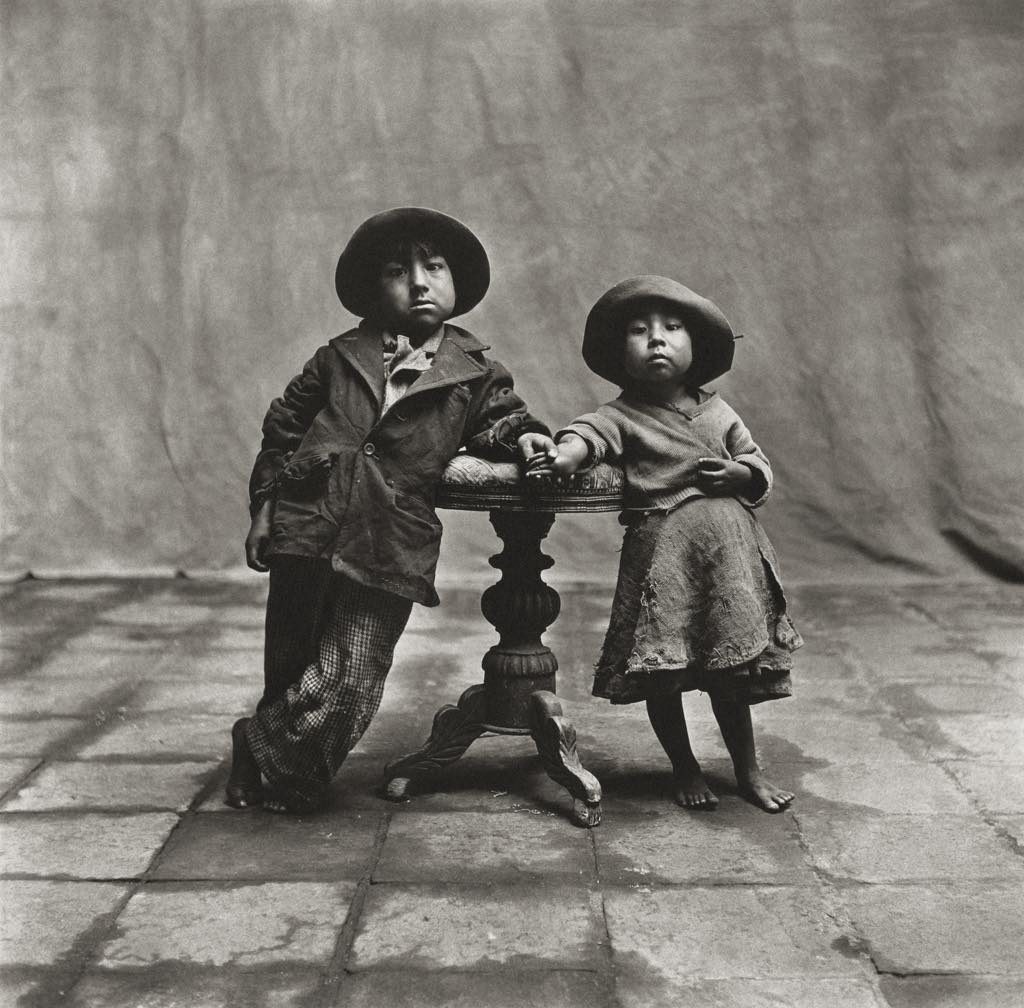Irving Penn (1917–2009) is one of the generation of postwar photographers who made their name in fashion but went on to conquer other photographic genres. The Grand Palais is now presenting a major retrospective (which originated at the Metropolitan Museum of Art in New York) of his work to celebrate the centennial of his birth.
Even those who know little about Penn’s biography can learn much about the man just by looking at the photos in this exhibition. The fashion images reveal a brilliant eye for graphic patterns and a sharp wit, while the portraits show a talent for capturing personality. The studies of people of other cultures bring out his respectful humanism, and the still lifes his search for perfection and his great curiosity. Even his nudes show him to be a cultured man who knows his art history.
His early still lifes and photos of the street are wonderful evocations of human life with no actual humans present: the shadows of a key and gun (from a shop sign) and a man on the sidewalk, for example, or a finished meal on a table with a crumpled napkin, already abandoned by the diner.
Penn, who worked for Vogue magazine for 60 years, famously used a neutral background – mostly a rather scruffy old theatre curtain that he traveled with – not only for portraits but also for fashion shoots. His first experience at a Paris fashion show was not a happy one: he disliked being one of a pack of aggressive photographers, so when he went back in 1950, he photographed the latest styles on models in a studio.
And then there are the beautiful and amusing black-and-white (as are most of his images, except the stunning series of flowers) fashion photos: a model in profile seen through an empty bottle that makes her look even skinnier than she is, having her cigarette lit by the hand of an unseen man; a model in an outlandish wide-shouldered dress and veiled hat pulling a face and looking off to the side, to name just two of many.
While Penn photographed plenty of beautiful and famous people (Marlene Dietrich, Audrey Hepburn, Salvador Dalí, Jean Cocteau, Picasso, etc.), he also made series depicting ordinary individuals posing with the tools of their trade, a popular theme as far back as the Middle Ages, among them a knife sharpener in Paris, a rag and bone man in London, a sewer cleaner in New York, all set against a neutral background and all exhibiting great pride and even joy.
The same applies to the people Penn plucked off the streets of Cuzco, Peru, and other countries, and photographed in a studio. No matter how ragged their clothes, they all seem almost haughty in their self-esteem, as if taking them out of context had restored their dignity – just look at the attitude of the two children pictured above.
Don’t miss out on this entertaining show. Penn is much more than a fashion photographer and deserves this homage.
Favorite





Fabulous exhibition – saw it in New York last month, highly recommend it.